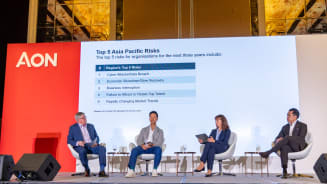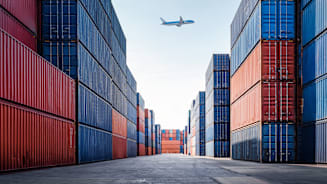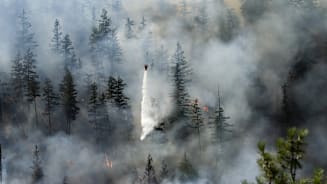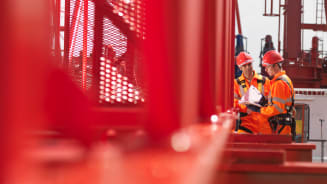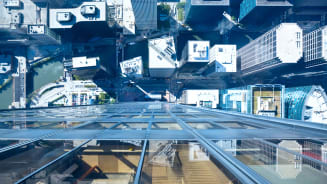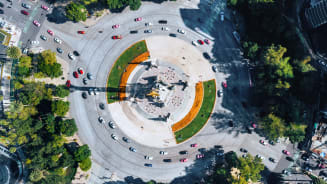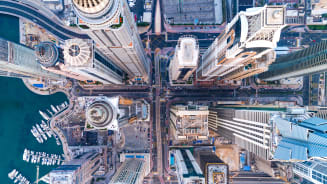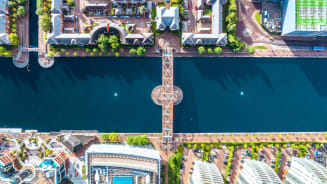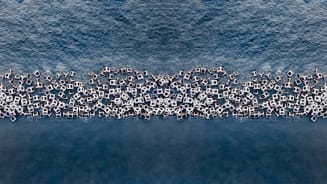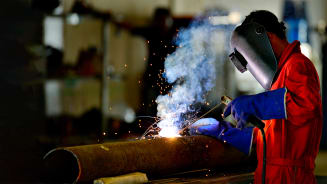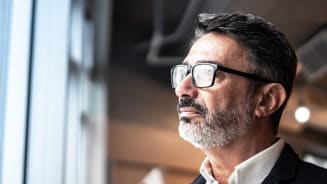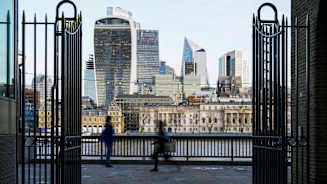Thriving in an Interconnected World: How the C-Suite Embraces Uncertainty

Business leaders from Seatrium, McDonald’s Singapore and Allianz SE share their strategies for managing interconnected risks within their organisations.
Business resilience has never been more important, given the number of global uncertainties such as the economic environment, geopolitical volatility, supply chain issues and technology challenges to name but a few.
Risks today can no longer be viewed in isolation. Whether tangible or intangible, seemingly disconnected risks can be interrelated and have cascading effects. To explore what it means to be resilient, we must first understand the connections between risks, so they can inform the design of holistic management systems.
Business resilience is paramount
As a Member of the Board of Management of the global insurance leader Allianz SE, Renate Wagner is part of a leadership team responsible for managing risks for their own business but also for their customers. “As part of the Allianz Risk Barometer, we asked more than 3000 risk managers operating in 92 countries and 24 sectors about risks their businesses are facing,” she says. “We found that cyber incidents, business interruption and natural catastrophes are the top three risks for our clients. In an interconnected world, these risks can exacerbate one another and interfere with the ability of a business to produce and deliver products and services.”
Adrian Teng, Chief Financial Officer at Seatrium revealed that the five risks from the Aon Global Risk Management Survey (GRMS)- cyber attack or data breach; Economic Slowdown or Slow Recovery; Business Interruption; Failure to Attract or Retain Top Talent and Rapidly Changing Market Trends - are firmly on the radar for their global marine engineering business. “The top 5 risks align very closely to what we see at Seatrium,” he says. “They are front and centre risks we face on a daily basis and challenge our business to increase resilience so we can continue innovating to deliver what our customers need.”
Trade: keeping supply stable
Perhaps one of the greatest business lessons for from ongoing geopolitical disruption is the importance of resilience in supply chains. Both the COVID pandemic and new conflicts in Ukraine and the Middle East have restricted supply of the energy and materials businesses rely on. While these circumstances require global businesses to diversify their supply chains to mitigate risk, a more fragmented approach presents new opportunities and risks as Benjamin Boh, Managing Director for McDonald’s Singapore explains.
“We have strict rules on production and service methodology,” he says. “With diversification of supply into markets such as China, Vietnam, Malaysia and Thailand we have elevated supply capabilities in these countries. However, diversifying supply can reduce economies of scale which challenges us in keeping supply stable and affordable to deliver what customers expect – a consistent product for an affordable price.”
In comparison, managing risk in the Seatrium supply chain is a longer play. “Tenders can last 12-18 months and projects run for years,” says Adrian. “Having certainty of supply cost and volume is a major challenge when the actions of rebels in Yemen to leaders in Moscow can impact our business on the demand and supply side. To build resilience we agree pricing and volume early and conduct supplier due diligence and tracking over time to monitor emerging and future risks.”
Technology: a double-edged sword
The importance of early detection in risk measures was also revealed in remarks from Renate on the number one risk facing global businesses today: cyberattack. “One of the top cyber threats are data breaches and ransomware,” she says. “To support companies in managing these risks, we offer tailored cyber insurance policies along with comprehensive risk assessments to identify vulnerabilities in a company’s IT infrastructure and recommend measures to mitigate potential threats. Being proactive in managing this risk is crucial, as our claims data shows if there is early detection and containment, the business costs can be as much as 1000 times lower.”
It’s not just deliberate attacks that cripple digital systems. The Crowdstrike outage in July 2024 taught businesses some valuable lessons in risk mitigation and response.
“No one expects to see a McDonald’s restaurant closed on a Friday afternoon,” says Ben “This speaks to the major impacts for our revenue and brand from a technology failure but it also taught us the importance of being able to go back to manual systems when digital fails. We didn’t have a contingency in place when there was no system to deliver orders from the counter to the kitchen.”
This includes processes to onboard and monitor suppliers for business continuity planning, financial stability and system vulnerability, highlighting a focus on prevention and early detection of supply chain risks.
Workforce: investing in skills and inclusion
For Ben this was a reminder of the skills his workforce need to adapt and adjust in a crisis. This demonstrates another overlap in these megatrends – the need for technology skills and diverse thinking for business innovation and resilience.
“At Allianz we have more than 300 uses cases for generative AI in different maturity stages,” says Renate. “For instance, we’re using it to reduce friction and accelerate the claims process and improve fraud detection by up to 90%. For this increase in efficiency to be scalable, building skills in our workforce is vital. To date we’ve had 15,000 of our people completed a 12-week AI learning journey, to give only one example.”
For Seatrium, competing for technology talent and younger hires has been an ongoing challenge. “Our approach is if you can’t beat them join them,” says Adrian. “We’ve created a technology arm within our business focussed on creating intellectual property in technology and engineering solutions for green energy and carbon capture development. This has attracted younger generations into our business, creating the opportunity for us to partner new hires and older engineers for knowledge transfer.”
Given the demographic spread of their employees, McDonald’s also foster cross-generational learning as part of their people strategy. “We have employees from four different generations all working together and we focus on this as a strength,” says Ben. “Diversity helps us build an adaptive workforce, one that includes not just smart people, but those who can problem-solve, co-ordinate and execute in a crisis.”
Weather: preparing for threats and opportunities
While weather didn’t make the top five for the Aon Global Risk Survey, natural catastrophe came in at number three for the 3,000 risk managers Allianz surveyed. “2023 was the warmest year on record and insured losses worldwide exceeded $100 billion for the first time,” says Renate. “In APAC and Africa losses in the first half of 2024 were $40 billion and only $9 billion were covered by insurance. Businesses are responding by shifting to low carbon models, carrying out thorough risk assessments to determine where vulnerabilities are in their assets and arranging insurance cover to ensure they can resume business as quickly as possible.”
As a business playing a pivotal role in the energy transition, Seatrium are also having to manage and mitigate risks coming from the journey towards net zero. “We’ve been involved in offshore wind projects for more than 20 years,” says Adrian. “Our projects include building two billion dollar transformers connecting wind farms with land. But anything to do with renewables is both political and economic which can slow down the transition. Inflation has impacted project sponsors, off-takers and consumers. As an enabler for renewable energy and low carbon marine transport, these changes in the pace of transition can also introduce risks for our business.”
General Disclaimer
This document is not intended to address any specific situation or to provide legal, regulatory, financial, or other advice. While care has been taken in the production of this document, Aon does not warrant, represent or guarantee the accuracy, adequacy, completeness or fitness for any purpose of the document or any part of it and can accept no liability for any loss incurred in any way by any person who may rely on it. Any recipient shall be responsible for the use to which it puts this document. This document has been compiled using information available to us up to its date of publication and is subject to any qualifications made in the document.
Terms of Use
The contents herein may not be reproduced, reused, reprinted or redistributed without the expressed written consent of Aon, unless otherwise authorized by Aon. To use information contained herein, please write to our team.
Aon's Better Being Podcast
Our Better Being podcast series, hosted by Aon Chief Wellbeing Officer Rachel Fellowes, explores wellbeing strategies and resilience. This season we cover human sustainability, kindness in the workplace, how to measure wellbeing, managing grief and more.
Aon Insights Series Asia
Expert Views on Today's Risk Capital and Human Capital Issues
Aon Insights Series Pacific
Expert Views on Today's Risk Capital and Human Capital Issues
Aon Insights Series UK
Expert Views on Today's Risk Capital and Human Capital Issues
Client Trends 2025
Better Decisions Across Interconnected Risk and People Issues.
Construction and Infrastructure
The construction industry is under pressure from interconnected risks and notable macroeconomic developments. Learn how your organization can benefit from construction insurance and risk management.
Cyber Labs
Stay in the loop on today's most pressing cyber security matters.
Cyber Resilience
Our Cyber Resilience collection gives you access to Aon’s latest insights on the evolving landscape of cyber threats and risk mitigation measures. Reach out to our experts to discuss how to make the right decisions to strengthen your organization’s cyber resilience.
Employee Wellbeing
Our Employee Wellbeing collection gives you access to the latest insights from Aon's human capital team. You can also reach out to the team at any time for assistance with your employee wellbeing needs.
Environmental, Social and Governance Insights
Explore Aon's latest environmental social and governance (ESG) insights.
Q4 2023 Global Insurance Market Insights
Our Global Insurance Market Insights highlight insurance market trends across pricing, capacity, underwriting, limits, deductibles and coverages.
Regional Results
How do the top risks on business leaders’ minds differ by region and how can these risks be mitigated? Explore the regional results to learn more.
Human Capital Analytics
Our Human Capital Analytics collection gives you access to the latest insights from Aon's human capital team. Contact us to learn how Aon’s analytics capabilities helps organizations make better workforce decisions.
Human Capital Quarterly Insights Briefs
Read our collection of human capital articles that explore in depth hot topics for HR and risk professionals, including using data and analytics to measure total rewards programs, how HR and finance can better partner and the impact AI will have on the workforce.
Insights for HR
Explore our hand-picked insights for human resources professionals.
Workforce
Our Workforce Collection provides access to the latest insights from Aon’s Human Capital team on topics ranging from health and benefits, retirement and talent practices. You can reach out to our team at any time to learn how we can help address emerging workforce challenges.
Mergers and Acquisitions
Our Mergers and Acquisitions (M&A) collection gives you access to the latest insights from Aon's thought leaders to help dealmakers make better decisions. Explore our latest insights and reach out to the team at any time for assistance with transaction challenges and opportunities.
Natural Resources and Energy Transition
The challenges in adopting renewable energy are changing with technological advancements, increasing market competition and numerous financial support mechanisms. Learn how your organization can benefit from our renewables solutions.
Navigating Volatility
How do businesses navigate their way through new forms of volatility and make decisions that protect and grow their organizations?
Parametric Insurance
Our Parametric Insurance Collection provides ways your organization can benefit from this simple, straightforward and fast-paying risk transfer solution. Reach out to learn how we can help you make better decisions to manage your catastrophe exposures and near-term volatility.
Pay Transparency and Equity
Our Pay Transparency and Equity collection gives you access to the latest insights from Aon's human capital team on topics ranging from pay equity to diversity, equity and inclusion. Contact us to learn how we can help your organization address these issues.
Property Risk Management
Forecasters are predicting an extremely active 2024 Atlantic hurricane season. Take measures to build resilience to mitigate risk for hurricane-prone properties.
Technology
Our Technology Collection provides access to the latest insights from Aon's thought leaders on navigating the evolving risks and opportunities of technology. Reach out to the team to learn how we can help you use technology to make better decisions for the future.
Top 10 Global Risks
Trade, technology, weather and workforce stability are the central forces in today’s risk landscape.
Trade
Our Trade Collection gives you access to the latest insights from Aon's thought leaders on navigating the evolving risks and opportunities for international business. Reach out to our team to understand how to make better decisions around macro trends and why they matter to businesses.
Transaction Solutions Global Claims Study
Better Decisions Across Interconnected Risk and People Issues.
Weather
With a changing climate, organizations in all sectors will need to protect their people and physical assets, reduce their carbon footprint, and invest in new solutions to thrive. Our Weather Collection provides you with critical insights to be prepared.
Workforce Resilience
Our Workforce Resilience collection gives you access to the latest insights from Aon's Human Capital team. You can reach out to the team at any time for questions about how we can assess gaps and help build a more resilience workforce.
Explore more from our Aon Insights Series:
-

Article
The Year of the Vote: How Geopolitical Volatility Will Impact Businesses
Companies that operate around the world need to have a global appreciation of the heightening geopolitical risk.
-

Article
Human Capital Innovation Symposium Insights: Why humans are the essential factor in the success of AI
Artificial Intelligence (AI) is transforming how data and analytics are deployed in the workplace. While AI offers powerful tools to shape data-driven decisions across human capital, its success hinges on a crucial element – the human touch.
-

Report
Climate and Catastrophe Insight
As climate change impacts the frequency and severity of costly weather events across the globe, the human and risk capital impact is tangible and measurable.
